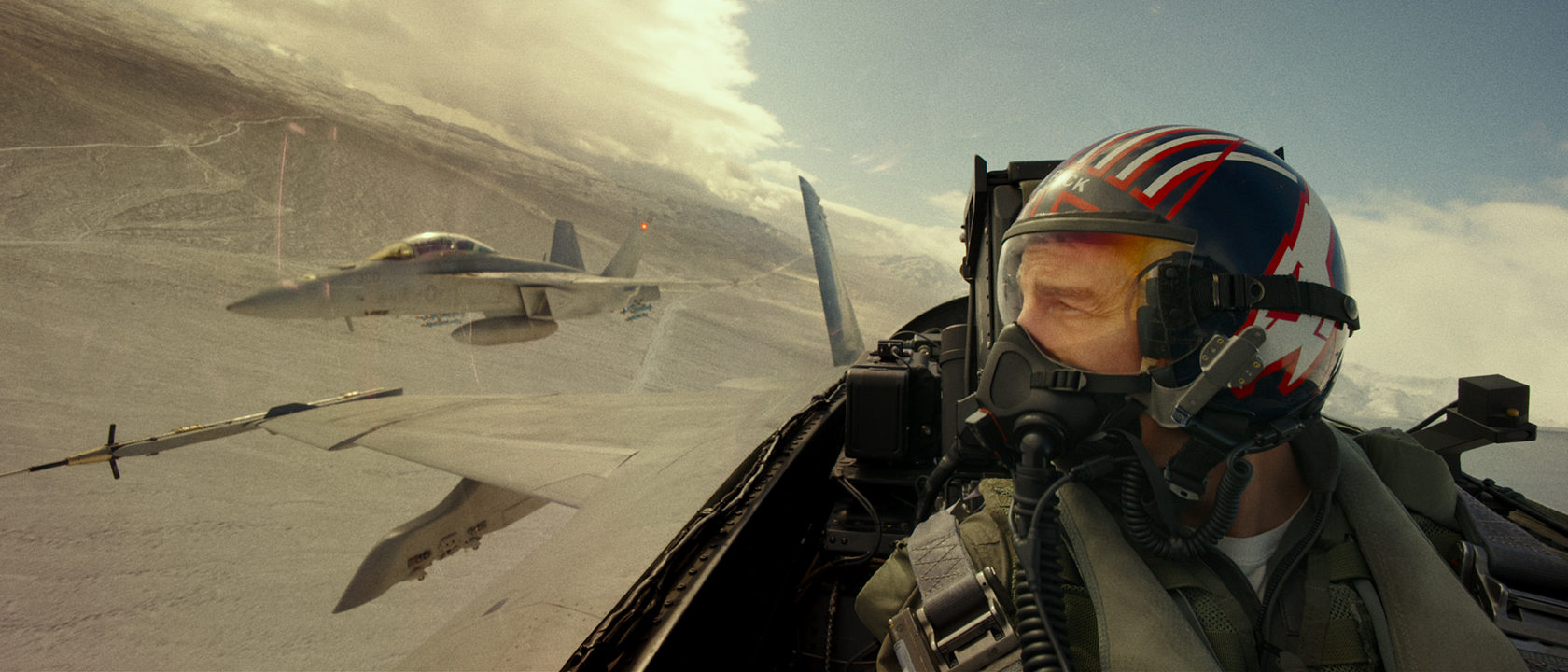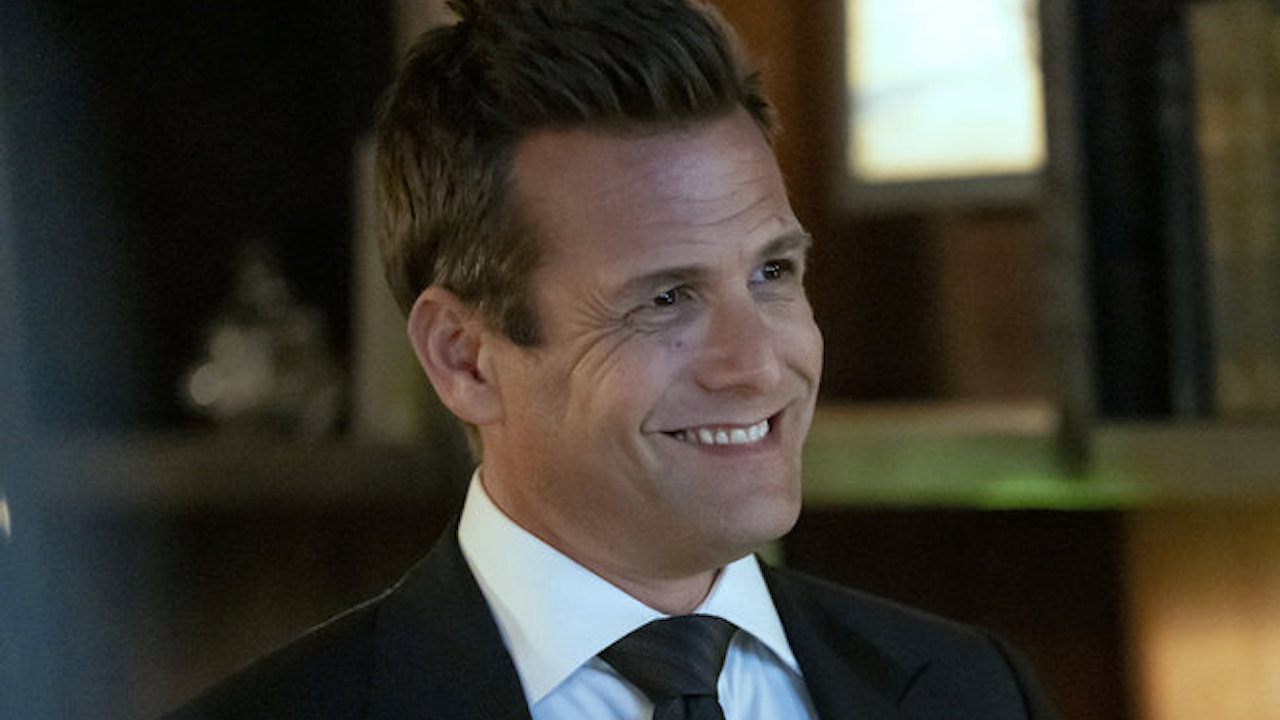Call it cinematic sacrilege, but upon reflection, there really isn’t much to Pete “Maverick” Mitchell in Tony Scott’s Top Gun. He’s the character that comes to mind when prompted to think about the stereotypical hot shot fighter pilot, and the 1986 film provides him with what can be called The Standard Arc of talent-driven highs, humility-driven lows, and a redemption denouement. These facts about the protagonist on the table, it’s fair to be dubious about a 36-years-later sequel.
That, however, is ignoring the most crucial part of the equation: Tom Cruise.
It’s true that the man is not infallible, but going back to the early 1980s he has been a reliable barometer for quality, and has proven his ability to not only deliver a charismatic performance, but guide a successful story. When Cruise puts his name on something, it deserves benefit of the doubt – and Joseph Kosinski’s Top Gun: Maverick will only be used as further proof of this truth in the years to come, as it is hard to imagine a more successful sequel to Top Gun.
From a certain angle, it’s a movie with a metatextual plot that examines its own relevancy. The question of why we need a Top Gun sequel now is akin to the question of why we need elite fighter pilots in the age of remote-controlled drones. The answer to the latter, as suggested by the film, is that a flying ace can make snap decisions in a moment that a drone operator can’t; and the answer to the former, as proven by the film, is that Tom Cruise is a goddamn star who has as much in the tank at 60 as he did when he was 24.
A reunion for Cruise and Joseph Kosinski, who previously collaborated on the 2013 sci-fi film Oblivion, Top Gun: Maverick catches up with Pete “Maverick” Mitchell, who has continued to serve with the United States Navy and is putting his talents to use as a test pilot flying planes designed to fly faster than Mach 10. A breathtaking opening sequence shows that Maverick still has remarkable skills… but he also that he hasn’t lost his knack for bristling against authority –demonstrated in that he was not supposed to perform the test given that his program is being shut down.
Rear Admiral Chester Cole (Ed Harris) sees Maverick as a relic, but he chooses not to retire him. Instead, he reassigns him to the US Navy's Fighter Weapons School – better known as TOPGUN.
Fulfilling the promise of the end of the first movie, Maverick is commanded to instruct a class of 12 pilots, but they aren’t newcomers; they are graduates, and the best of the best. The military has gotten intel that an unnamed “enemy” has been maintaining an unsanctioned uranium plant, and while it is heavily guarded by anti-aircraft weapons and a fleet of highly advanced jets, the order is to strike and destroy it. Maverick is told that he has to train the aviators for the specifics of the potentially suicidal mission, and in three weeks’ time must pick the six who will actually execute it, including a team leader.
Among the pilots are the irrepressibly cocky Lieutenant "Hangman" Seresin (Glen Powell), the introverted Lieutenant Robert "Bob" Floyd (Lewis Pullman), and the smart and responsible Lieutenant Natasha "Phoenix" Trace (Monica Barbaro) – but the name in the roster that stands out to Maverick is Lieutenant Bradley "Rooster" Bradshaw (Miles Teller), who is the son of Anthony Edwards’ Lieutenant Nick "Goose" Bradshaw. Not only is the eponymous protagonist hesitant to risk the life of someone he cares about, but Rooster has spent years resenting Maverick and brings all of his baggage to the competition.
Top Gun: Maverick finds an interesting and compelling story to tell, and executes it with passion.
Like a jet doing a deep dive and skimming the ground before launching back into the sky, Top Gun: Maverick briefly seems like it is going to commit the cardinal sin of sequels – repeating what is in the first movie – but instead it opts to tell a story that is ultimately more compelling and exciting than its predecessor. It has plenty of fan service and homages, from Kenny Loggins’ “Danger Zone” blasting through the speakers in the opening scenes, to a beach football game with echoes of in infamous volleyball sequence from the original, but the film mostly carves its own path, with Tom Cruise leading the campaign.
While Top Gun arguably operates like a police thriller (think of Maverick as a hot shot cop trying to prove himself in a new precinct and you’ll see the parallel), Top Gun: Maverick is a sports movie where the protagonist is a high school coach who has to get his team ready and set his lineup for the big game. Instead of fielding grounders or shooting free throws, however, the players are performing death-defying maneuvers in F-18s. It’s not equipped with much in the way of twists or big surprises, but it’s made with such passion that it makes you energetically root for the characters amidst your senses being overwhelmed with brilliant aerial action.
Top Gun: Maverick provides a visceral cinematic experience.
Top Gun: Maverick is a ride as much as it is a film, but instead of being a roller coaster, the metaphor is a bit more literal: you regularly feel like you are a bug that has gone splat across the windshield of a jet fighter while it is flying at multiples of the speed of sound, and it’s an adrenaline kick that never loses its potency. On top of the cinematography being phenomenally immersive, the impeccable sound design makes you feel every sonic boom and engine roar in your lower intestine. The training sequences alone induce heart palpitations – the pilots executing hairpin turns and high-g climbs that make the audience feel like they are experiencing the extreme pressure – but it’s the high stakes third act that truly rings your brain out with cinematic fireworks.
If measures need to be taken, let them be taken: to experience Top Gun: Maverick properly, it needs to be seen in the best theatrical presentation you can find in your area.
The whole cast is great, but it's the power of Tom Cruise that makes Top Gun: Maverick work.
Of course, the film can’t keep you in the cockpit with the pilots forever – but that’s a strength, not a liability. The supporting cast is full of bright spots, including Jennifer Connelly as Maverick’s “one who got away,” and Jon Hamm as the stern principal always looking over Maverick’s shoulder (to continue the sports movie comparison from earlier). Monica Barbaro and Glen Powell are standouts among the TOPGUN grads, though some of the best character work in the film is between Rooster and Maverick, as Miles Teller and Tom Cruise have excellent conflicted energy between them in every shared scene, there’s a surprising complexity to their history.
As the title of the film suggests, however, Top Gun Maverick is Tom Cruise’s show, and in every moment he reminds us why he is one of movie history’s most beloved stars. The performance is remarkably authentic, and he makes you care about Pete “Maverick” Mitchell, even if you never cared before.
Thinking about Top Gun: Maverick, I’m reminded of rumors that swirled back in 2010 – prior to the release of Mission: Impossible Ghost Protocol. After Jeremy Renner joined the cast of the developing sequel, there was talk about plans for him to take the reins of the franchise from Tom Cruise’s Ethan Hunt. About a year later, Cruise stunned the world by actually climbing the outside of the Burj Khalifa in Dubai, and now he is in production on his eighth Mission: Impossible blockbuster (with the seventh, Mission Impossible – Dead Reckoning (Part 1), in post-production, coming out in 2023).
Even when he’s not playing Ethan Hunt, Tom Cruise can do impossible things. He can galvanize a 26-year-old film franchise and make it more exciting now than it has ever been before, and he can make what seems on paper to be an IP-driven cash grab and make a brilliant sequel that is a banquet for the senses. Top Gun: Maverick is a movie that feels like it is the best version of itself, and it’s a thrill.

Eric Eisenberg is the Assistant Managing Editor at CinemaBlend. After graduating Boston University and earning a bachelor’s degree in journalism, he took a part-time job as a staff writer for CinemaBlend, and after six months was offered the opportunity to move to Los Angeles and take on a newly created West Coast Editor position. Over a decade later, he's continuing to advance his interests and expertise. In addition to conducting filmmaker interviews and contributing to the news and feature content of the site, Eric also oversees the Movie Reviews section, writes the the weekend box office report (published Sundays), and is the site's resident Stephen King expert. He has two King-related columns.











